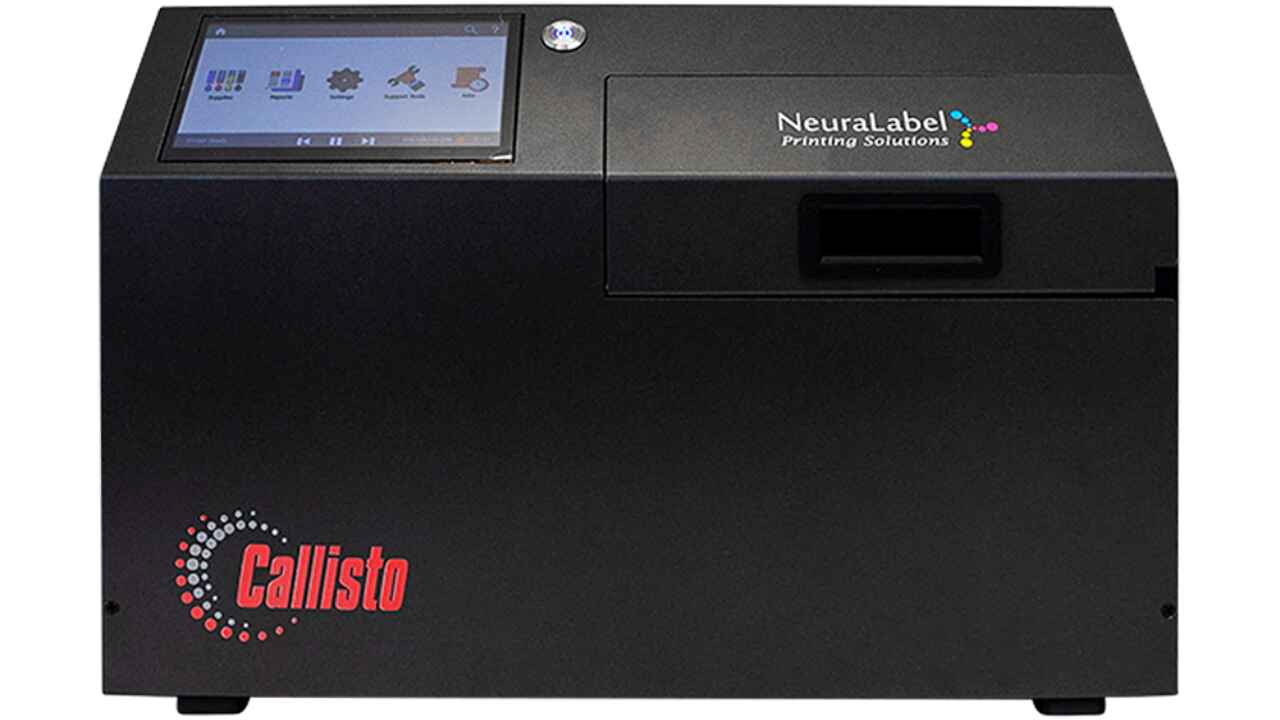Changing the game

Danielle Jerschefske reveals how Innovative Labeling Solutions is changing the rules of the digital game
Innovative Labeling Solutions has made a significant investment in digital technology over the last four years. With two HP Indigo ws4500 machines and the new WS6000, and two AB Graphic Digicon off-line finishing systems, ILS is driving its business forward with the unique way it sells digital to the customer.
ILS jumped into digital in 2005 with the purchase of an HP Indigo ws4500, a move quickly followed by the purchase of a second machine within the year. Jay Dollries, president, says, ‘we evaluated the technology from a business standpoint and saw the huge opportunity to grow our business. There was a learning curve at first, but now that we’ve mastered the process and have all the pieces in place, we’re using digital to keep us ahead of the curve.’
The converter’s opportunity analysis has proven correct. Digital capability pushed ILS into the shrink sleeve and flexible packaging market – both areas with higher growth percentage than other types of product decoration – and the folding carton business.
‘With digital we’ve been able to service markets that we couldn’t break into previously,’ Dollries explains. ‘It allows marketers to target specific demographics, gives a high quality image and provides varietal possibilities in quantities that were far too costly on flexo. Now flexo is still a very important part of the business, but it has growth limitations because of what digital has
to offer.’
ILS acquired the HP Indigo WS6000, specifically, to expand its digital shrink sleeve business and to increase efficiency. The WS6000 frame size is larger than the ws4500, it runs at higher speeds and can produce work on a wider range of substrates. ILS is printing on 48 gauge polyester and is able to match colors on thick board up to 48 point.
‘We’re continually running tests to see just how far this press can go so we remain at the front end of product development,’ tells Dollries.
Historically converters have sold the technology on the cost per label crossover point between flexography and digital on shorter jobs, but ILS prefers to avoid the price per thousand discussion. ‘We are selling value, not cost comparison,’ explains Dollries. ‘Digital’s not just for short runs anymore.’
Game Changing – Selling Value
From the first investment, ILS has recognized and highlighted the value of digital printing to its customers. ‘We’ve treated digital as a whole new business unit where we encourage our clients to utilize the technology as a tool for sales growth,’ Dollries says.
Eric Knop, director of business development, comments: ‘We won’t sell digital on a price comparison with traditional printing. If we sell on price, then the capabilities are minimized and the label is a commodity.’
Rather, ILS encourages its customers to realize the benefits digital printing has to offer. ILS marketing director, Kathy Popovich, says, ‘Digital’s inherent characteristics help sell the essence of a brand. It provides the ability to produce multiple SKUs, each with premium graphics, sending a clear and advanced marketing message that is deliverable just in time.’
The key is addressing the right people. Marketing or brand personnel are more likely to realize digital’s advantage and therefore be more willing to look at ROI from a sell-through perspective versus just cost per label; digital can change the image of a product to increase market share.
Popovich helps clients evaluate their product and assists in creating a label program to influence growth. ‘Ultimately we’ll look at what digital can do to boost the brand’s market appearance,’ she says.
This is where package designers and graphic teams can assist with solid overall branding. ILS says that most designers are not familiar enough with the technology.
‘The introduction of new “flavors” requires frequent design revision and designers need to know that quick changes to text, design, and color can be done without the added cost of plates. We talk with the designers to educate them about digital, the fast turnaround, graphic control and quality that is achievable with the no-plate technology,’ says Popovich. ‘We’ve found great success once the designers are convinced of the endless possibilities.’
Many ILS customers have reaped the benefits of digital technology. Small, mid and worldwide customers that want color and graphic variety can now affordably change the look of a label where previously it was only affordable to change the black out to alter the SKU.
Popovich reports that one customer, Candle Cottage candles, achieved significant market growth from its ‘colorful, visually appealing’ digital labels. ‘Since candles are so seasonally driven, it only made sense for the company to switch to digital in order to give its products a more compelling look for the various, ever-changing SKUs.’
When a brand owner insists on a cost comparison, ILS will evaluate the total cost of ownership to highlight the economic benefits of JIT delivery, and, it will analyze the product’s ability to achieve ROI because of the marketing benefits. ‘Our job is to open the door and bring a solution to the table, lead the customer to a positive ROI,’ Knop says. ‘The return is much better in most cases with digital.’
There has been some resistance from customers, but once they are familiar with the possibilities, they’re more open to the technology. ILS hosted an educational forum at its facility in Hamilton, Ohio in April. The purpose of the forum was to educate brand owners and packaging designers about the value digital decoration brings to a product line. The day-long event included presentations by HP Indigo, Karlville, Fasson and P&G. ILS plans to host another later this year because of the huge success.
The Private Label Opportunity
Digital has opened the door for significant growth in the private label sector. Particularly at this point in the global economy, consumers are looking for the same value and quality found in national brands in a lower-cost private label. Digital packaging is perfect for delivering high-end graphics that upgrade the look of a label without minimum quantity requirements, and at a reasonable cost.
One ILS customer, Market Beverage Group, a full service private label supplier for the beverage market, has found a way to capture new, untapped business using the technology. Prior to the introduction of digital printing, Market Beverage Group did not have many private label products that cost less than $50,000 up-front. But with digital shifting the economies of scale, an investment can be made with as little as 20 percent cost of conventional.
‘Our customers are able to get a start in the private label sector at an earlier stage because of digital,’ COO Mike Ramer comments. ‘Digital printing almost completely eliminates the up-front cost of printing plates, thereby reducing the minimum quantities that a customer can cost-effectively order without any sacrifice to the quality of the packaging.’
Ramer explains that a vast majority of convenience stores and food chains in North America are small players with well under 100 stores. Digital technology gives this large group an opportunity to affordably launch its own brand to compete and build up their own name all while making money on the shelf. ‘Without digital, none of this would be possible,’ he says.
ILS uses two AB Graphic finishing machines to complete its digital work. The Digicon Series I has hot stamp, embossing, die cutting and a flexo unit. Its Digicon Series 2 offers the converter semi-rotary silk screen capability for tactile varnish to improve the opacity of the inks, a flexo unit and sheeting capability. Having two machines gives more flexibility.
ILS also has an AB Graphic Digilam. The consistent temperature control on thin films is truly what allowed the converter to break into flexible packaging. It is reverse printing 48 gauge film and sealing it to a barrier film on the Digilam. ‘With high quality lamination capability we are able to provide a turnkey solution to our clients,’ explains Dollries. ‘It also helps us supply JIT because we can produce a smaller quantity of material in-house to suit a need at any time.’
Predictable budget
Dollries says that with digital everything is controlled which gives more consistency to the work. ‘We can predict the cost of digital with more accuracy than mechanical machinery,’ he says. ‘This consistency is what larger brand owners find appealing.’ International brand managers have also begun to see the growth potential in mass customization.
Flexo and History
Innovative Labeling Solutions was founded in 1996 as an all flexo house. The facility in Hamilton, Ohio, just outside of Cincinnati, is 65,000 sq ft and runs two shifts five days a week with 45 employees.
It manufactures all of its own plates in-house using the DuPont Cyrel Fast to supply four Comco presses and a Mark Andy.
ILS also has made a significant investment in ancillary equipment for its 9-color long run dedicated Comco Commander with 1 UV unit. It has a Martin Automatic splicer on the front and an AB Graphic Flyevision 100 percent inspection slitter/rewinder machine on the back; the thin film compatible Flyevision automatically kicks out bad rolls while rewinding and packing finished work in-line. The vision system eliminates the bottlenecking that had occurred in the finishing area behind the press.
Well it’s clear that digital has found its place within the label industry and success is plausible with the right business plan in place. Yet without a strong strategy, growth can be difficult and ROI even more farfetched. Innovative Labeling Solutions has made the investment, created its own rules, and embraced its consultative approach, one surely, that’s a new winning play for the books.
This article was published in L&L issue 4, 2009
Stay up to date
Subscribe to the free Label News newsletter and receive the latest content every week. We'll never share your email address.


